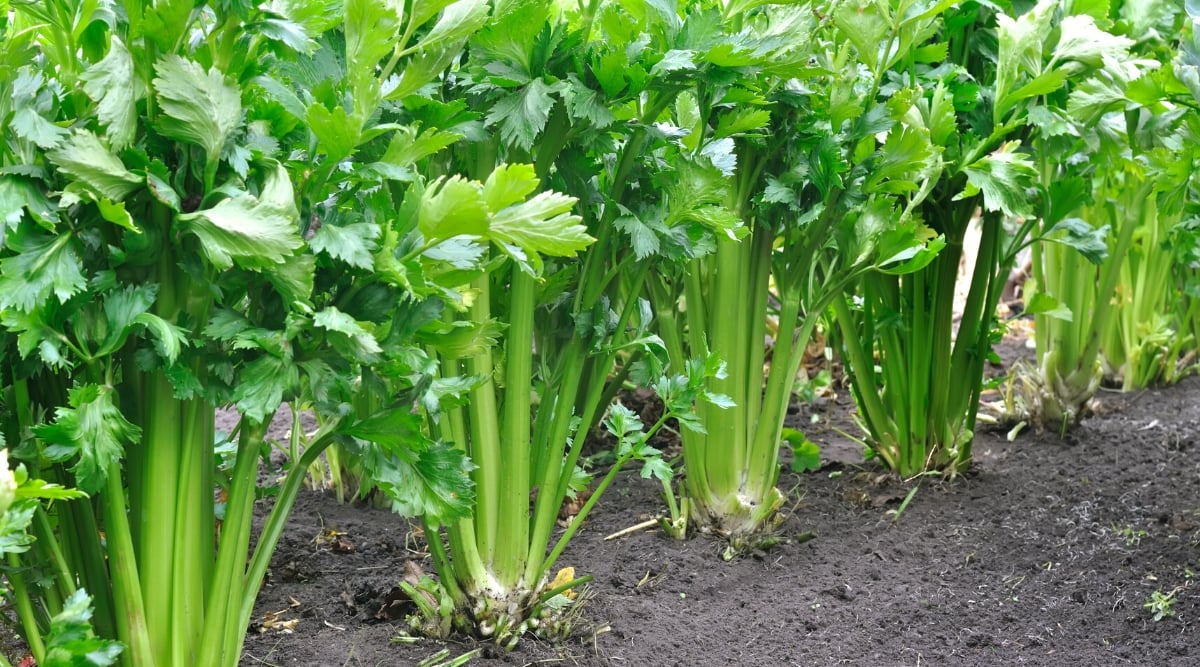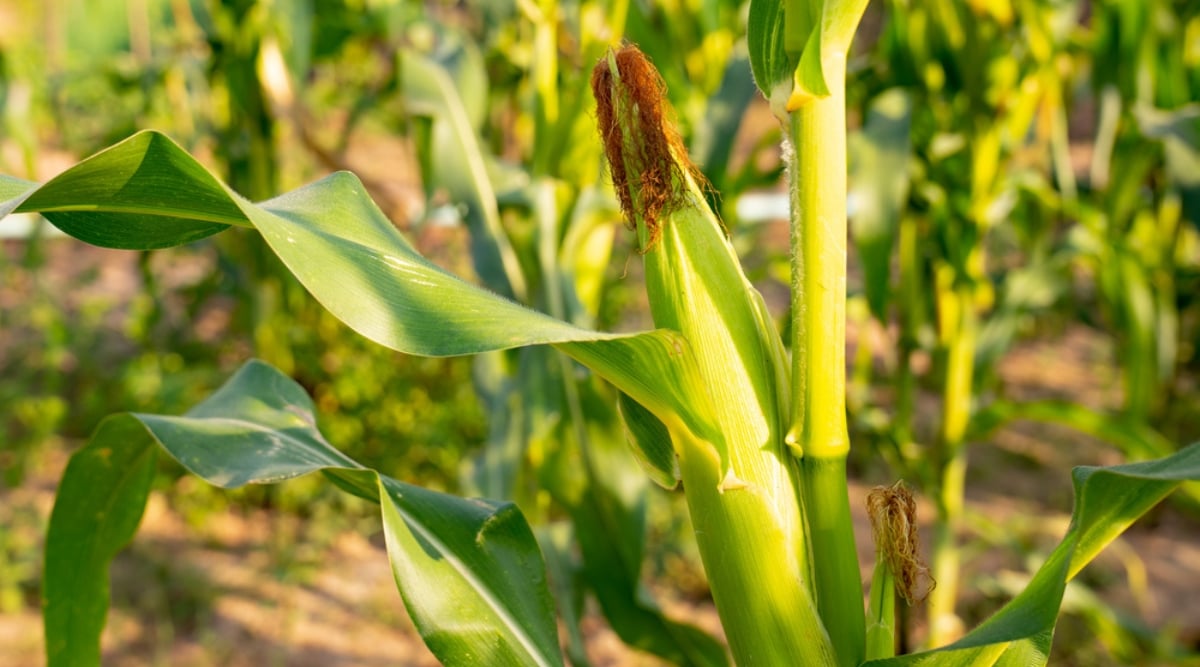Cauliflower can be enjoyed in so many ways: dipped in ranch dressing, sauteed, in a stir fry as a rice substitute, and even to make pizza crusts. With so many options for this versatile plant, you’ll need to grow your own just to try them all! You might assume you don’t have room for them since they can grow so large, but many companion plants don’t mind being next to the cauliflower.
You’ll need to choose plants that like a lot of water and don’t need the same nutrients as cauliflower. Since these brassicas are heavy feeders, they should be fertilized regularly throughout the season. There are many ways to incorporate other plants into your cauliflower patch that will benefit or tolerate cauliflower nearby.
I will show you 15 companion plants you can grow with cauliflower so you can use all your garden space. There’s no need to let rogue cauliflower leaves take over!
What Is Companion Planting?
Companion planting can result in reduced pests, enhanced growth, and reputed better flavor.
Plants work better together, and anyone who uses companion planting in their garden knows it. Different plant varieties in the same space can benefit each other in ways that will help reduce pests, increase growth, and sometimes even enhance the flavor. Most importantly, companion planting improves biodiversity by bringing in more pollinators and beneficial insects.
Companion planting allows you to extend your growing seasons beyond what you’d normally do without it. A garden bed dedicated to lettuce will bolt in late spring or early summer, but when large plants like tomatoes or sunflowers protect those heads of lettuce, they can last a little longer because they aren’t suffering under the summer sun.
This gardening method can benefit farmers with several acres of land, a small container garden on a balcony, and every garden size in between.
Cauliflower as Companion Plants
I used to think you couldn’t plant anything with cauliflower because of how big the leaves can grow. But these plants can still be good neighbors even if they occupy a lot of space. Let’s look at what you can expect with these cole crops around.
Most of the cauliflower plant is above ground, meaning it doesn’t take up much space below the surface. You can utilize that space by planting crops that need plenty of soil, like potatoes or beets. The cauliflower leaves can help protect roots and tubers as they develop.
Cauliflower doesn’t need a lot of the same nutrients as its companions, so it won’t have to compete for them as much. However, they need a lot of nitrogen, so you’ll still need to fertilize them throughout the growing season.
I associate cauliflower (and the rest of the Brassica bunch) with pests. They’re susceptible to cabbage loopers, cabbage worms, cabbage root maggots, armyworms, aphids, cucumber beetles, snails, slugs, flea beetles, and thrips. Nearly every plant is susceptible to something, but it seems like cauliflower attracts pests that eat up a lot of its companions, so you’ll need to keep an eye out for pest invasions.
Cauliflower needs 1-2 inches of water each week, which may limit what you can plant nearby. If you choose a companion that also likes water, you must provide even more water for the thirsty plants in that small area. Keeping companion plants in containers nearby is a good way to make sense of your watering schedule.
Companion planting can lead to better brassica harvests!
Companion Plants for Cauliflower
Let’s look at some plants that will work well with cauliflower. Some plants provide benefits, while others are recommended because they don’t cause any problems.
Beans
 Improve next season’s soil by planting beans alongside your cauliflower.
Improve next season’s soil by planting beans alongside your cauliflower.
Since cauliflower needs plenty of nitrogen to develop its leaves and head, you’ll want to keep plenty of beans nearby. Beans absorb nitrogen from the air, then affix it in nodules on their roots. While this nitrogen won’t become available until the bean roots decompose after the season, you’re essentially improving your next season’s crop in advance – and any fertilizer you add will go straight to the cauliflower!
Both bush and pole beans are doable, but you’ll need to control pole beans with trellises to prevent them from overtaking cauliflower with their vines. You must also ensure they don’t cast too much shade over the cauliflower. Alternating rows of each plant will work, as will growing cauliflower in front of a row of beans on the side that receives the most sunlight.
Remember that beans are warm weather lovers, so this pairing is best during those joints between the seasons; late summer into early fall when you plant the fall cauliflower crop or in the spring before you harvest your final cauliflower heads.
Beets
 Planting cauliflower and beets near one another works out well.
Planting cauliflower and beets near one another works out well.
Cauliflower roots are shallow, but despite that, beetroot usually pairs well with them. You can plant them pretty close to each other as long as the cauliflower won’t get shaded out by beet greens or vice versa. Remember that cauliflower can have pretty massive greens itself, and you’ll want to keep the beets out from under them.
Though a beet’s root is often the more popular crop, its greens are just as important. They’re full of magnesium and will help your cauliflower grow well. Let dead leaves fall to the ground, and if you’re not a fan of eating the greens, leave them behind to act as a mulch and enrich the soil.
Celery
 Celery and cauliflower make great companions due to their water needs.
Celery and cauliflower make great companions due to their water needs.
Celery is a good companion for cauliflower because they both need a lot of water to be happy. They should receive 1-2 inches per week and shouldn’t be allowed to dry out, although you also don’t want water to puddle around either plant type.
A huge benefit celery offers is keeping away cabbage moths. These moths will gobble up your crops quickly, so consider growing a few celery plants to keep them at bay.
Cucumber
 Cauliflower and cucumbers thrive together with proper care.
Cauliflower and cucumbers thrive together with proper care.
Cucumbers make good companions for cauliflower as long as you ensure both plants have everything they need. They’re both incredibly thirsty plants that will need 1-2 inches of water each week and possibly more if you live in a dry area. You’ll also need to fertilize them regularly since they’re both heavy feeders.
Growing cucumbers can help you extend your cauliflower harvest into early summer since they’ll provide plenty of shade once they climb trellises. Cauliflower will bolt once the weather warms up unless you give them shade.
Corn
 This summer classic is a helpful companion, providing shade during the fall harvest.
This summer classic is a helpful companion, providing shade during the fall harvest.
Corn is another companion to help you get more out of your brassica crop. It may not be tall enough to help your cauliflower survive the early summer heat, but when planting seeds in July for a fall harvest, the corn stalks will provide plenty of shade.
Depending on when you planted corn, it should be ready to harvest at the end of summer when the cauliflower is at an early stage. You can leave the stalks in the ground or use a shade cloth if the temperatures are still too hot for cauliflower to be happy.
Dill
 This herb attracts beneficial predators, repels pests, and benefits brassicas.
This herb attracts beneficial predators, repels pests, and benefits brassicas.
Dill attracts a variety of pollinators and beneficial insects that will benefit your entire garden. Many of the critters it brings in eat aphids, which can be a detriment to your cauliflower. Dill and cauliflower both have shallow root systems, so you may want to keep dill in a container nearby so they don’t compete for water.
A big draw of having dill near a brassica patch is that it repels cabbage moths. You’ll have them around anytime you’re growing brassicas, so planting a few dill plants will help you lower the population.
Onions
 These alliums repel pests with their strong scent.
These alliums repel pests with their strong scent.
Onions and cauliflower get along well since their root systems and foliage don’t interfere with each other. You can plant them pretty snugly together if you have a small space. Like beets, though, it’s best not to put the onions directly under the cauliflower foliage!
You’ll want onions nearby because they repel major brassica pests, including cabbage loopers, rabbits, and aphids. All three of these critters harm your crops differently but will keep their distance since they don’t like the onion smell.
Nasturtium
 This flower is a trap crop for whiteflies and aphids.
This flower is a trap crop for whiteflies and aphids.
If you have a lot of whiteflies and aphids bugging your brassicas, use nasturtium as a trap crop nearby. Allow these pests to feast on the plant while you remove them from your main crop. When it’s time to get rid of the plant, you’ll get rid of many pests.
Nasturtium grows beautiful flowers that attract many beneficial insects that will go after brassica pests. They bring in a lot of ladybugs that go after aphids as well as hoverflies, parasitic wasps, and lacewings that go after cabbage worms and whiteflies.
Nasturtium doesn’t need as much water as most vegetable crops, so you can plant it on the edge of your annual beds or keep it in containers.
Potatoes
 Spuds won’t interfere with brassicas; they have different needs but require similar watering.
Spuds won’t interfere with brassicas; they have different needs but require similar watering.
Potato plants develop their tubers pretty deep in the ground, so they won’t compete with shallow cauliflower roots. The foliage has a short bushy growth habit that shouldn’t get in the way of your cabbage unless you plant them too close.
Potatoes and cauliflower have different requirements and won’t compete for the same nutrients. They need the same amount of water each week, making them easy to care for in the garden.
Rosemary
 This Mediterranean herb deters pests and doesn’t need much water.
This Mediterranean herb deters pests and doesn’t need much water.
You’ll want to keep several rosemary plants around because of everything it will deter! Cabbage moths, snails, slugs, and several fly varieties hate the scent and will stay far away.
Rosemary is drought-tolerant and will grow best in a container. It prefers dry soil and only needs to be watered about once a week, if even that. This low-maintenance schedule may be difficult to keep up with if it’s in the ground next to your cauliflower. Alternatively, consider planting some rosemary at the very end of cauliflower rows, but don’t run the drip irrigation up to it; as long as it has a little bit of water now and again, it’ll perform well.
Sage
 Salvia species battle pests for brassicas, attracting beneficial insects.
Salvia species battle pests for brassicas, attracting beneficial insects.
Sage is another herb that will go to battle for your cauliflower. It repels major pests like flea beetles, cabbage maggots, cabbage worms, cabbage moths, and cabbage loopers. When sage goes to flower, it will attract all sorts of pollinators.
Sage and rosemary make great companions for each other, so you can plant them both with cauliflower to help keep pests away. Sage also prefers dry conditions, so keeping them near but separate from your brassicas is ideal. While it will tolerate more water than rosemary will, it does prefer a drier soil base than your cauliflower.
Spinach
 This iron-rich green enjoys some shade from large brassica leaves.
This iron-rich green enjoys some shade from large brassica leaves.
Spinach is an easy-to-grow spring crop that will grow well with cauliflower. This fast-growing plant will act as a living mulch and help suppress weeds while your cauliflower seedlings develop.
They both have shallow root systems but shouldn’t compete too much if there’s enough space between the plants. They both like water and sunlight and will bolt once the temperatures get too warm, so caring for them simultaneously will be a breeze.
Sunflowers
 These cheery blooms attract pollinators and provide shade for cauliflower.
These cheery blooms attract pollinators and provide shade for cauliflower.
If you need more pollinators in your garden, sunflowers are the way to go. They attract bees, butterflies, and other beneficial insects you’ll want to have around.
As far as brassica crops go, sunflowers provide a little shade for cauliflower that’s getting close to harvest time in the spring, plus they can offer shade late in the season when you’re starting your new plants.
Swiss Chard
 Brassicas and Swiss chard coexist peacefully, with no competition, easy companions.
Brassicas and Swiss chard coexist peacefully, with no competition, easy companions.
Swiss chard is one of those companion plants I mentioned that doesn’t necessarily benefit cauliflower but doesn’t cause problems. Chard and cauliflower are content to exist with each other without giving or taking. It sounds like an easy friendship!
Both plants have shallow root systems, but when appropriately spaced, they won’t get tangled and fight for water. They don’t need the same nutrients, so they’re not competing for that, either. Pair these two peaceful residents with some herbs that bring in beneficial insects (especially ones like dill that can draw in predators for common brassica pests), and you’re good to go.
Thyme
 Thyme masks the brassica scent, repels pests, attracts pollinators, and can act as ground cover.
Thyme masks the brassica scent, repels pests, attracts pollinators, and can act as ground cover.
This aromatic herb can mask the scent of cauliflower and keep bugs away. Most pest insects don’t like the smell of thyme, to begin with, so they’ll stay away from the start. Thyme is good to keep around because it will repel earworms, maggots, hornworms, mosquitoes, and whiteflies.
Thyme will also attract pollinators and beneficial insects when it flowers, and many of them will eat pests like aphids. This herb can also behave as a ground cover if you allow it to spread out so it can help suppress weeds.
Thyme is another herb that prefers dry conditions, so this is another one to put in a container or on the edges of your brassica bed, where the soil will dry out quicker.
Final Thoughts
Cabbage moths and other pests can ravage cauliflower, but fortunately, many beneficial companion plants help keep them away. With a little planning, you can surround your cauliflower with helpful plants that will make them easier to care for.




